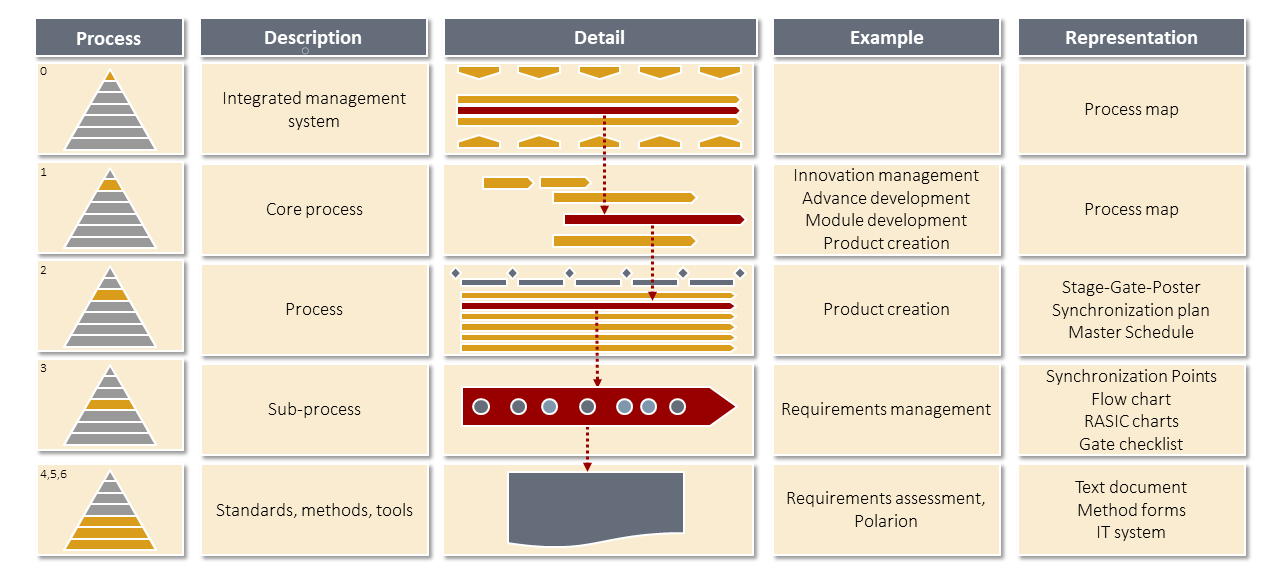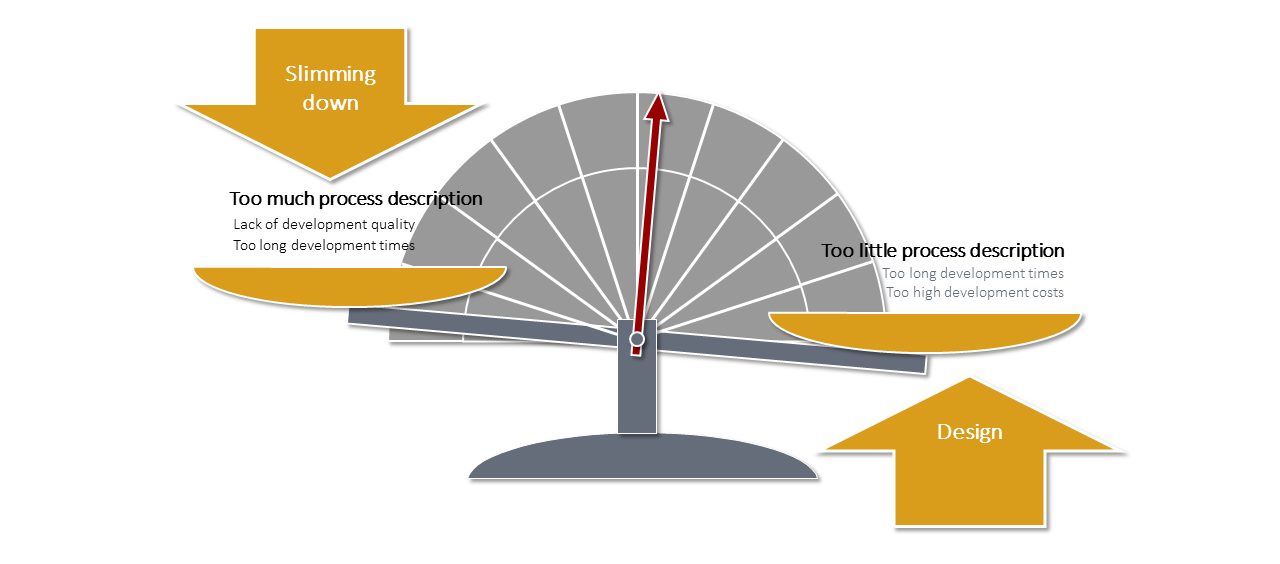Optimise processes
Sparkling business ideas and a robust culture are the foundation of a successful business. To unleash the full potential of your business, you are required to organise natural processes and responsibilities to this end. Your focus is always on creating maximum customer value. Nevertheless, you have the impression that the effort required for your organisational structure sometimes gets out of hand due to existing processes, or that gaps exist in these very processes at certain crucial points. Employees then look for their own ways to achieve the requisite goals. This leads to ambiguities and expensive consequential effects. Therefore: Decide in favour of greater efficiency by improving your processes.

Organisation and process are inseparable
Companies go through typical stages of maturity in the course of their development. They tend to perfect processes that are already performing well and neglect those weak points or unloved topics in their efforts to improve.
In addition, growth leads to increased complexity. The number of interfaces grows and, with it, the number of people involved. Attempts at demarcation lead to the formation of competency focal points as a result of the division of labour. This often ends in transitional losses.
The company’s overall efficiency decreases, due to the fact that often only glaring process weaknesses are eliminated without aligning such processes with a view to establishing an optimum approach.
The process map as the start of a holistic approach
It is of no consequence as to whether you are responsible for a go-getting start-up, an established medium-sized company or a globally operational major corporation. You always need a standardised and holistic set of instruments for the goal-oriented discussion of processes and everything that supports their execution.
The question of demarcation is always of essential importance when optimising processes:
- What purpose does a process serve?
- What customer benefit does it generate?
- When does a process begin?
- When does a process end?
- What interfaces are there?
- Which prerequisites must be met when starting?
- What results does the process produce?
- Who is responsible for the process?
These overarching questions are as simple as they are essential when it comes to describing processes and regulating the necessary responsibilities without allowing for overlaps to occur or subjecting them to scrutiny.
From a macro perspective, the process map provides all essential company processes and, subsequently, the entry point to the necessary detailing of processes.
For the process architecture, we commence from the following process model, which we design according to your requirements.
Often, however, the weak points are not harboured in the process itself, but in the application of underlying methods or the compatibility of supporting tools. It does not matter whether we are talking about simple templates or complex IT tools that interlink several process levels.
A uniform view of the process map (and the underlying process architecture) by managers forms, therefore, the basis for the quick development of a common perspective on existing weaknesses.
In practice, we encounter two different starting situations with resulting different goals for optimising the product development process (PDP ).
When eliminating process weaknesses, it is not expedient to tear up all the “construction sites” at once. Rather, a step-by-step approach in line with prioritised processes is recommended, as the process landscape is usually highly interwoven. It is also important to consider what level of process description is needed, in order to eliminate weaknesses. If the correct level is achieved, significant effort is avoided and a high degree of acceptance is achieved. Weaknesses are typically found in a whole range of processes:
Five tips from practice
- Always design your organisational structure according to the requirements of your strategy and processes.
- Decouple the implementation of your projects from changes in your organisational structure by establishing a role-based organisation. This creates stability within the processes – even with dynamic growth or major organisational changes.
- Establish process management for your process landscape and have it regularly reviewed by external experts (by way of audit).
- Accept that processes are subject to permanent improvement and appoint individuals responsible for them.
- Develop a company-wide perspective of your process landscape, ensure its transparency on the Intranet and keep it up-to-date. Processes are not “secret knowledge” in a high-performance corporate culture.
The introduction (or restructuring) of a process landscape cannot succeed without sound analysis and competent change management. The challenge is to turn the right screws and to consistently involve managers and employees in the changes at hand, as well as to reduce associated fears and reservations as quickly as possible and to highlight the advantages to be gained.
Our consultants will show you the most effective ways to achieve this
As former specialists and managers in industry, our consultants have established and continuously improved processes in various sectors with significant operational responsibility. Thanks to their many years of consulting experience, they are able to quickly identify typical deficits and provide you with best-in-class procedures.
In addition to the fast and experience-based approach described above, we also provide you with the Smart Development Assessment, a tool with which the need for action in the process landscape can be determined in a structured way. In doing so, you gain additional knowledge and insight into where your processes are sufficiently supported by your organisational set-up and the strategic framework, and where they are not.
The benefit to you
- You will benefit from a maturity and benchmark-based analysis tool.
- You learn where additional processes are needed or where a streamlining of the process landscape is necessary.
- You will benefit from our many years of process and industry expertise.
- We support managers and employees in the best possible way during the process design and implementation phases with communication measures and training, thereby achieving a high level of acceptance.
- Joint development of the processes as the most important benefit: You receive a process that is tailored to your needs.











